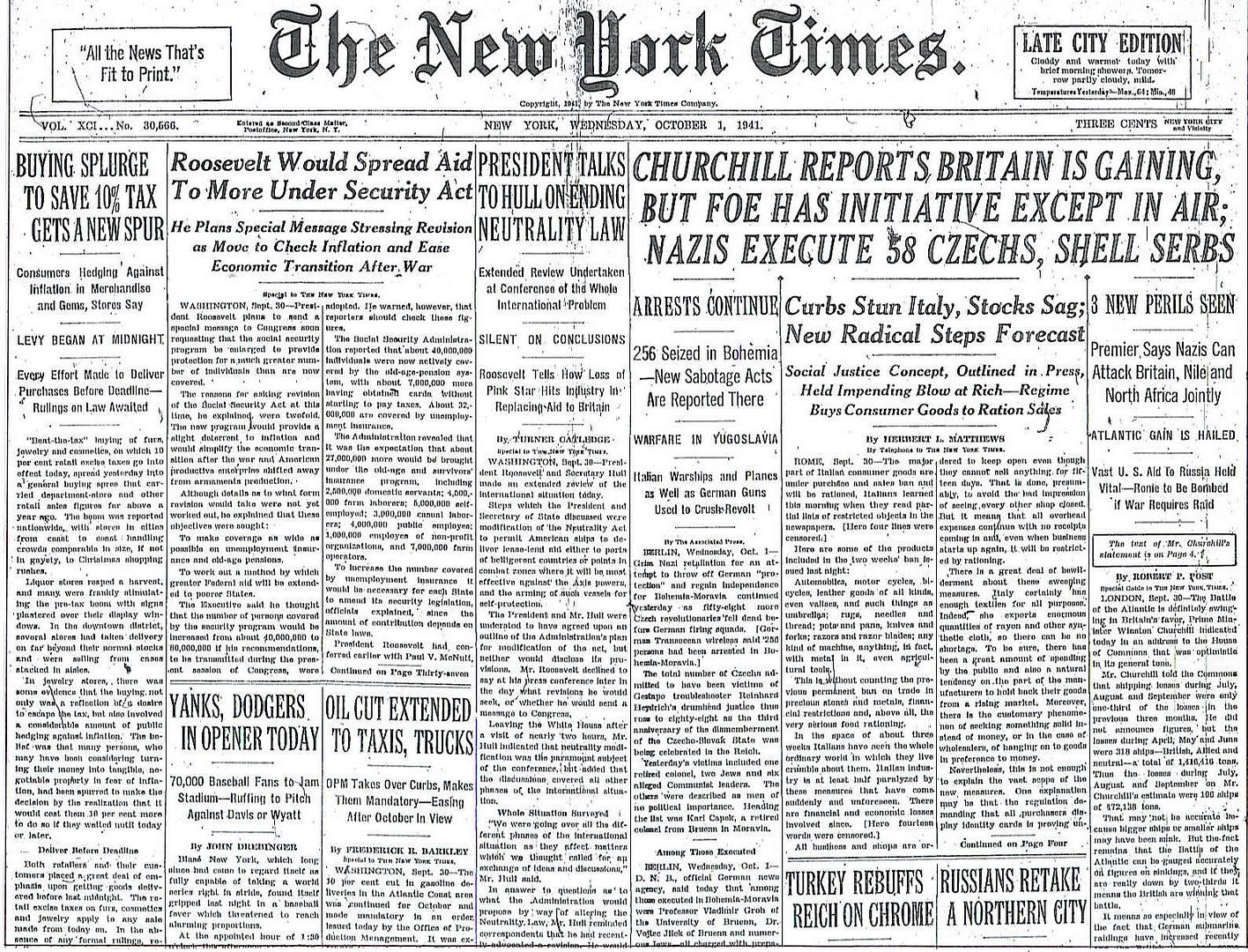
Posted on 10/01/2011 6:24:16 AM PDT by Homer_J_Simpson


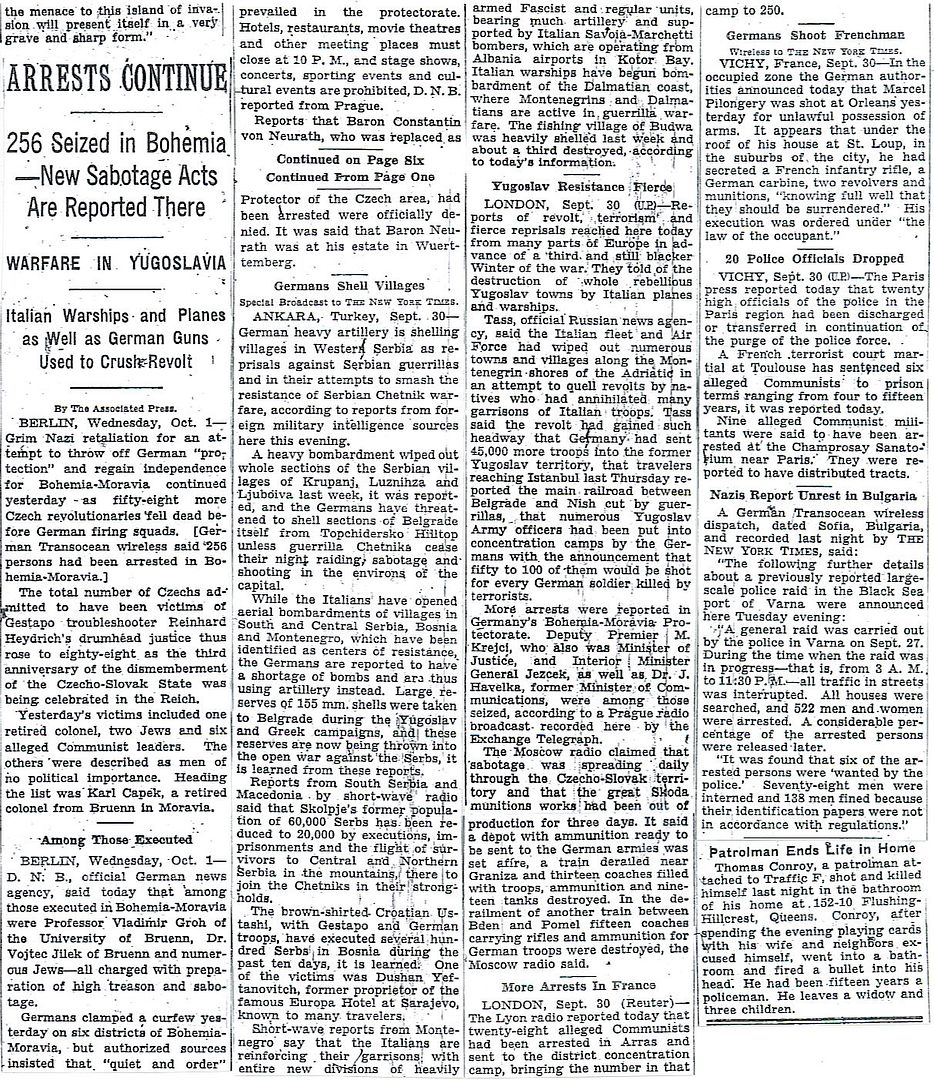
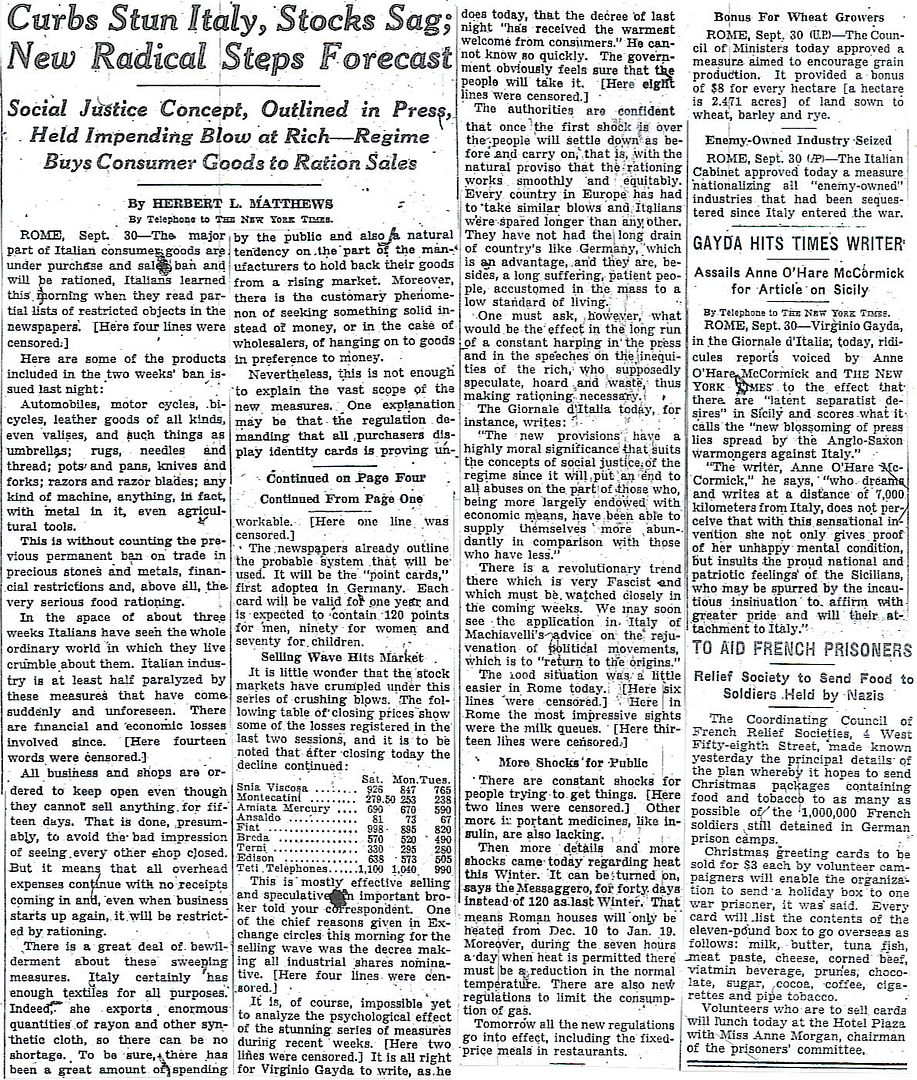

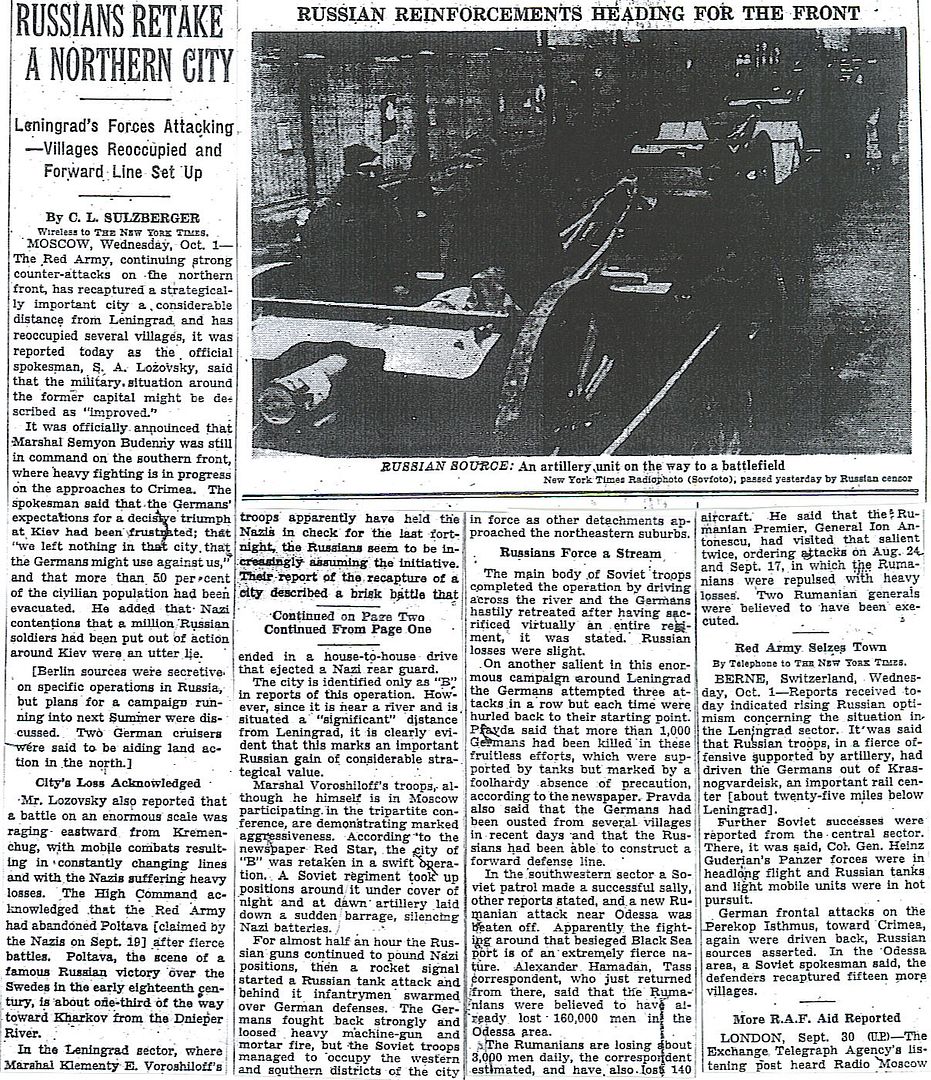
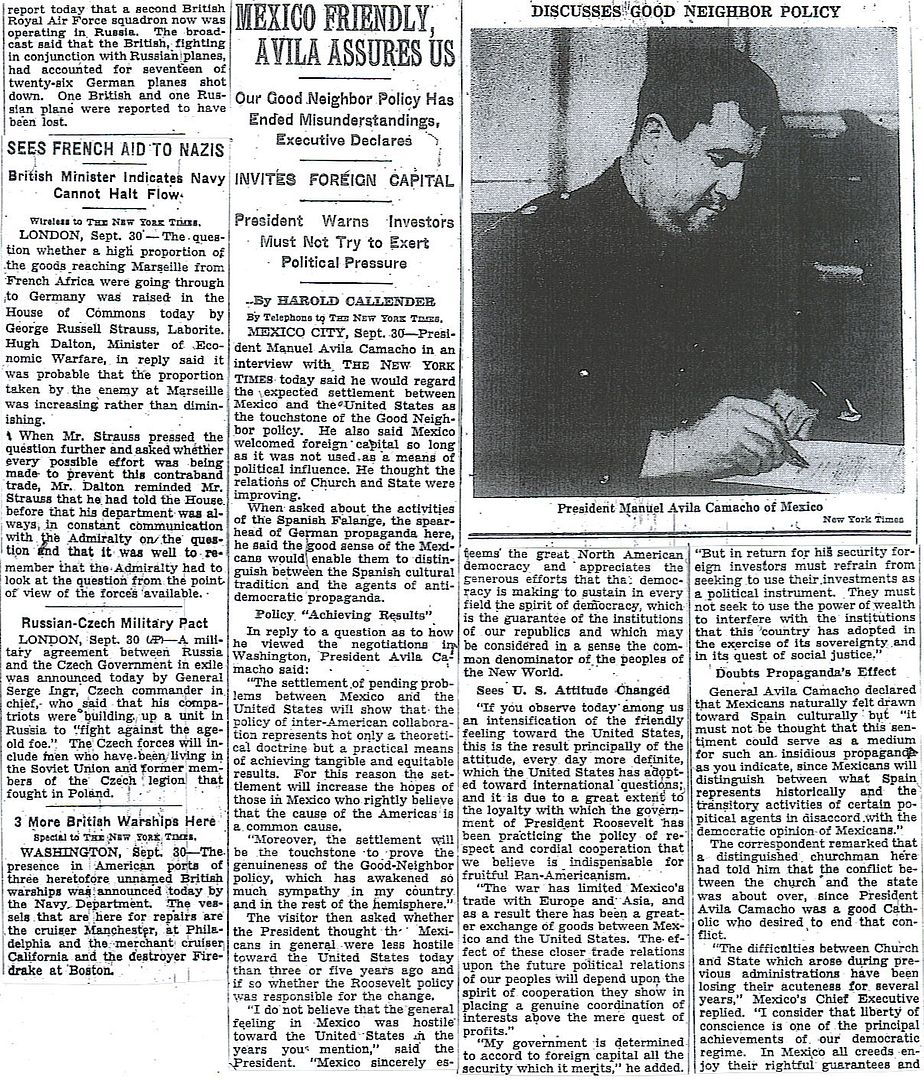

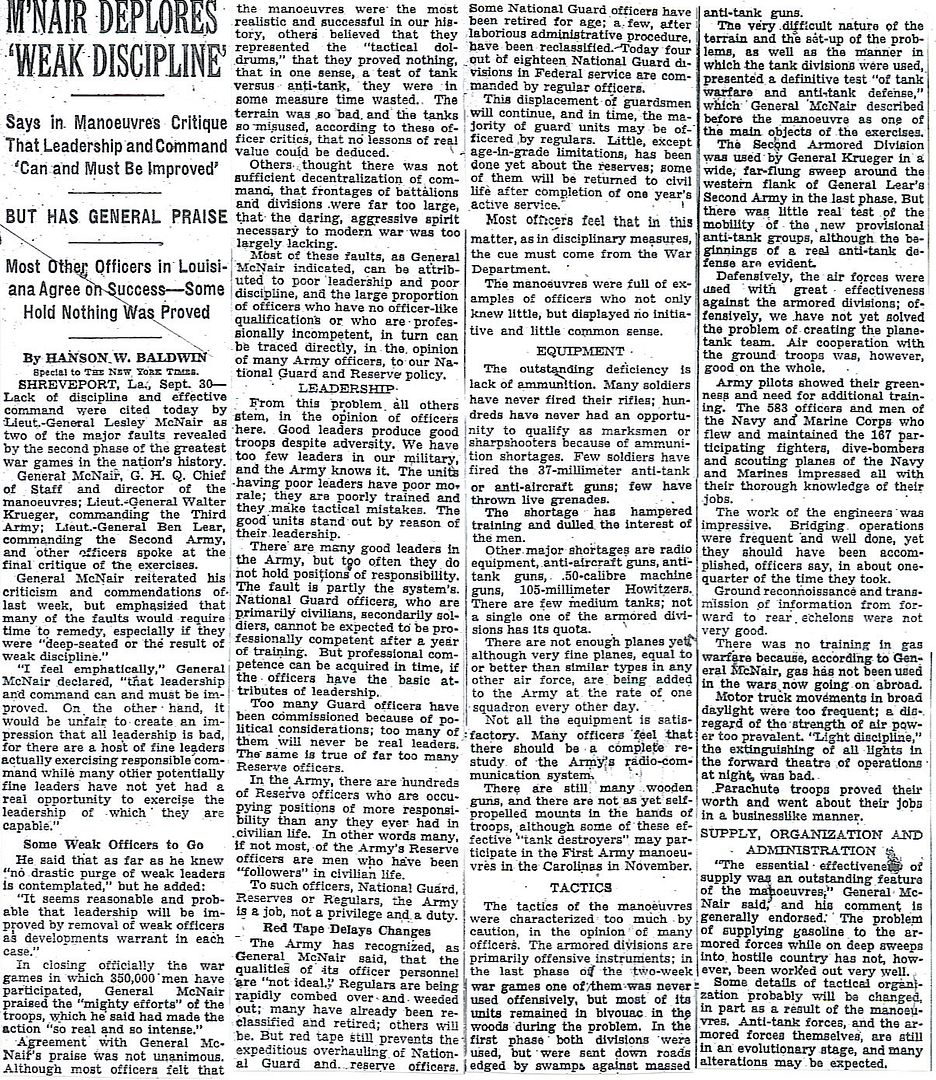

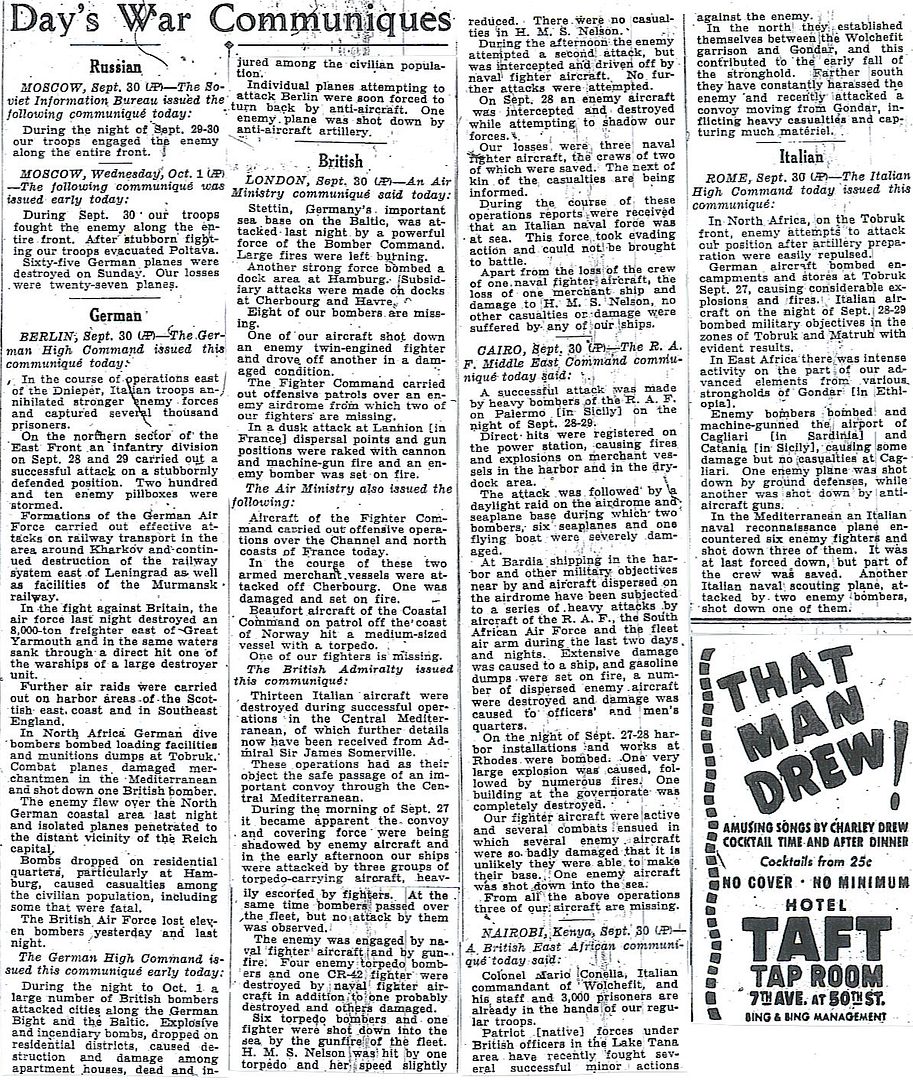
http://www.onwar.com/chrono/1941/oct41/f01oct41.htm
Finns on offensive near Leningrad
Wednesday, October 1, 1941 www.onwar.com
On the Eastern Front... Finnish forces near Leningrad attack and capture Petrozavvodsk.
In Moscow... An Allied planning conference ends. Harriman attends from the US, Beaverbrook, from Britain and Molotov heads the Soviet delegation.
"Jews of Swieciany, Lithuania, are massacred in the nearby Polygon Woods.
Several hundred young Jewish men manage to escape."
Massacre at Babi Yar
"Days after the German Army captured Kiev, Ukraine, the bloodiest shooting massacre of the Holocaust took place on the outskirts of that city.
Over the course of two days in September 1941, Einsatzgruppen and Security Police commandos slaughtered more than 33,000 of Kiev's Jews at a ravine called Babi Yar.
"When a series of explosions and fires in Kiev killed many German soldiers and destroyed army headquarters, Jews were blamed. In retaliation, German authorities posted a sign announcing a supposed "resettlement" of the city's Jews.
Under threat of death, more than 30,000 were marched to the Jewish cemetery.
From there they were marched in small groups to Babi Yar.
"Stripped of all clothing, the trembling Jews were led into the ravine.
Ordered to lie down, each was shot in the back of the head.
The massacre continued uninterruptedly.
New victims were forced to lie on those already dead.
Corpses stacked up in layers.
A survivor recalled being miraculously untouched by the bullets but, clutching her son to her naked body, fell under "a heap of warm, bloody bodies.
The bodies of old men rested on the bodies of children, who lay on the bodies of their dead mothers."
Commander Paul Blobel later attempted to obliterate all traces of the massacre.
"Heydrich made 'Protector of Bohemia and Moravia.'
"More than 3200 Jews of Ejszyszki, Lithuania, are executed at pits on the outskirts of the city."
"Among the most infamous mass executions perpetrated by the Germans during the war was that at Babi Yar, a ravine near Kiev, Ukraine.
On September 29 and 30, 1941, the Germans, with the aid of Ukrainian collaborators, rounded up and executed 33,771 Jews at Babi Yar.
This massacre was one of many carried out by German Einsatzkommandos and police regiments following the invasion of the Soviet Union."
"Jews at Kiev, Ukraine, are ordered to assemble for 'resettlement.' "
"Paul Blobel was commander of Sonderkommando 4a of Einsatzgruppe C, which carried out numerous atrocities in the Ukraine during the summer and fall of 1941, among them the Babi Yar massacre.
He also headed another enormous massacre at Kharkov, Ukraine, in late December 1941.
More than 21,600 Jews were slaughtered."
http://homepage.ntlworld.com/andrew.etherington/month/thismonth/01.htm
October 1st, 1941
UNITED KINGDOM: The war has dramatically changed the lives of children as well as adults on the home front. After the turmoil and tears of evacuation - often more than once, as the threat of aerial bombardment came and went - a major problem has been how to keep an education system alive.
Hundreds of schools have been hit by bombs, forcing children to have lessons in churches or even pubs. Many private schools have been moved lock, stock and blackboard to the country. But after the first wave of evacuation many school buildings which escaped unscathed were used as Civil Defence depots. By January 1940 it was estimated that one third of all city children were receiving no schooling at all. Large numbers of evacuees also swamped village schools, so many were taught in people’s homes
There has also been a desperate shortage of teachers, as many were called up for war duties. Classes have therefore become quite large, often with as many as 50 or 60 children in a single classroom. And when the children can get to school, what they learn is also affected by the war. Pencils are shared and margins have been abolished because of the paper shortage. Geography is taught by following troop movements and gardening has replaced games in many schools, where it is taught as part of the “dig for victory” campaign.
General de Gaulle’s French government-in-exile sets up Radiodiffusion-Télévision Française. (Jack McKillop)
Light cruiser HMS Tiger laid down. Corvette HMS Acanthus commissioned. (Dave Shirlaw)
GERMANY: U-234, U-340, U-469, U-731 laid down. U-177, U-597 launched. (Dave Shirlaw)
U.S.S.R.: Petrozavodsk falls to Finnish forces as they attack west of Lake Onega.
Early in morning, troops of Battlegroup Paalu (formed from 1st Division) and Detachment Lagus enter Petrozavodsk in eastern Karelia. It’s the largest population center outside the pre-1939 borders conquered by Finnish Army. The city is renamed Äänislinna.
In the ravaged city the Finnish troops find, to their immense delight, the liquor distillery’s tank intact and full. An AT-rifle is used to make hole in the tank, and soon the soldiers are boozing happily. As night is falling, streets are filled with drunken soldiers singing loudly and firing their weapons in air. One group takes over the city sports stadium and organises an armed guard to ensure that nobody disturbs their peace. Several detachments of military police are needed to clean up the mess. (Mikko Härmeinen)
Odessa: German forces use gliders to land behind Russian lines.
Vilna: 3,000 Jews are rounded up and shot dead in Ponary woods.
Moscow: An Anglo-American mission, led by Lord Beaverbrook to has agreed to boost military aid to Stalin next year. The USA will allocate 1,200 tanks a month to Britain and the USSR between July 1942 and January 1943, and a further 2,000 tanks a month for the following six months. This will mean initial US consignments of 400 tanks a month for the Soviets from 1 July.
In addition the USA will send 3,600 aircraft to Russia between 1 July 1942 and 1 July 1943, over and above the planes already being sent by Britain. The Soviets will supply Britain and the USA with urgently needed raw materials.
This conference between Britain, the U.S., and the Soviet Union concludes. W. Averell Harriman, the U.S. representative to the conference, writes, “The delegates to the conference were sent here in order to examine the question of the needs of the Soviet Union, which is fighting against the Axis powers, for supplies which the United States and Great Britain must deliver. The conference, which has taken place under the chairmanship of Mr. Molotov, the People’s Commissar for Foreign Affairs, carried on its work since Monday without interruption. The conference examined the question of the resources of the Soviet Government in connection with the production possibilities of the United States and Great Britain. The conference decided to place at the disposal of the Soviet Government practically everything which was requested by the Soviet military and civil authorities. The Soviet Government is supplying Great Britain and the United States with large quantities of raw materials which are urgently needed by those countries. The question of transport possibilities has been examined in detail, and plans have been worked out for increasing the flow of freight in all directions.” (Jack McKillop)
CHINA: Changsha: Japanese troops were today on the run in Hunan after the collapse of their two-month-long offensive aimed at seizing the provincial capital, Changsha. First estimates put the Japanese losses for the campaign as high as 40,000.
The failure to take this vital town on the Manchuria-Canton railway is a setback for the Japanese. Control of Changsha would have made possible the opening of a new route for moving troops and materials to the Malayan and Burmese fronts.
The turning-point came four days ago as the Japanese main force, supported by 100 planes, launched an all-out attack on Changsha. By late afternoon a Japanese detachment in civilian clothes had got inside the city. But its backup, an airborne unit which it should have linked up with to destroy the cities defences, was dropped too far close to the Chinese front line and wiped out.
The Chinese troops, under General Hsueh Yueh, encircled the retreating Japanese between the Lao-tao and Liu-yang rivers, inflicting heavy casualties. A simultaneous offensive was launched in Yichang, tying down the only Japanese force available to relieve the fleeing 11th Corps.
COMMONWEALTH OF THE PHILIPPINES: MacArthur vehemently protests Rainbow-5 to War Department. (Marc Small)
The NEW ZEALAND Division of the Royal Navy becomes the Royal New Zealand Navy and all ships’ names prefixed by HMNZS instead of HMS. The ships effected included the cruisers HMS ACHILLES and LEANDER. (Peter Beeston)
U.S.A.: US Navy Secretary Knox speaks on behalf of Freedom of the Seas. (Dave Shirlaw)
Baseball!
The USN assigns popular names to their aircraft, e.g., Catalina, Devastator, Dauntless, etc. (Jack McKillop)
Submarine USS Haddo laid down.
Escort carrier USS Bogue laid down. (Dave Shirlaw)
ATLANTIC OCEAN: U-552 was attacked by a Hudson aircraft which dropped one bomb and damaged the U-boat slightly. (Dave Shirlaw)
Disclaimer: Opinions posted on Free Republic are those of the individual posters and do not necessarily represent the opinion of Free Republic or its management. All materials posted herein are protected by copyright law and the exemption for fair use of copyrighted works.